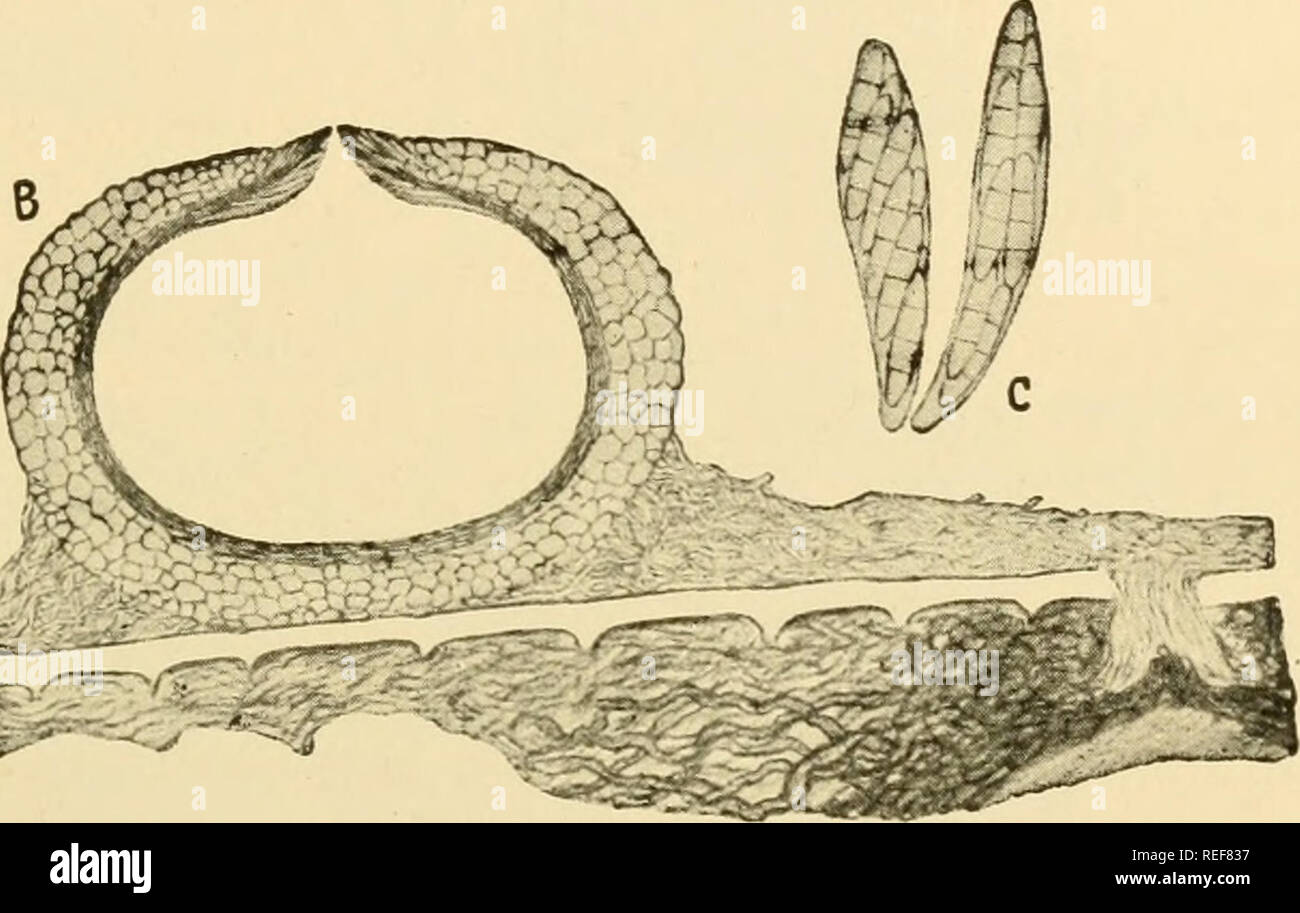. Comparative morphology of Fungi. Fungi. Fig. 152.—Calonectria erubescens. A. Ascospores ( X 750). B. Mature perithecium with subiculum (X 140). C. Mature asci (X 400). (After Weese, 1914.) nivale), the "snow mould" chiefly on rye, causes a wad-like covering and death of seedlings; furthermore in damp summers it appears at the base of the stems and causes a foot rot of grain (Schaffnit, 1912, 1913). Gibber- ella Saubinetii (Botryosphaeria Saubinelii according to the nomenclature of Weese 1919) causes foot disease and scab of small grains; Pleonectria berolinensis causes the death of

Image details
Contributor:
The Book Worm / Alamy Stock PhotoImage ID:
REF837File size:
7.2 MB (247.6 KB Compressed download)Releases:
Model - no | Property - noDo I need a release?Dimensions:
1987 x 1258 px | 33.6 x 21.3 cm | 13.2 x 8.4 inches | 150dpiMore information:
This image is a public domain image, which means either that copyright has expired in the image or the copyright holder has waived their copyright. Alamy charges you a fee for access to the high resolution copy of the image.
This image could have imperfections as it’s either historical or reportage.
. Comparative morphology of Fungi. Fungi. Fig. 152.—Calonectria erubescens. A. Ascospores ( X 750). B. Mature perithecium with subiculum (X 140). C. Mature asci (X 400). (After Weese, 1914.) nivale), the "snow mould" chiefly on rye, causes a wad-like covering and death of seedlings; furthermore in damp summers it appears at the base of the stems and causes a foot rot of grain (Schaffnit, 1912, 1913). Gibber- ella Saubinetii (Botryosphaeria Saubinelii according to the nomenclature of Weese 1919) causes foot disease and scab of small grains; Pleonectria berolinensis causes the death of Ribes. Hypomyces differs from the four previous genera in the extensive development of gemmae. It is chiefly parasitic on agarics and forms a stroma on the underside. The infection is generally visible by the appearance of a fine, arachnoid mycelium whose hyphae cut off acroge- nously fine, hyaline, generally unicellular conidia; in this stage, the fungi in question have been assigned to various imperfect genera, as Verticillium, Botrytis and Sporotrichum. Later there appear on the same hyphae, thick-walled, often sulptured gemmae. These two forms were earlier regarded as independent species and assigned to Sepedonium, Mycogone, . Please note that these images are extracted from scanned page images that may have been digitally enhanced for readability - coloration and appearance of these illustrations may not perfectly resemble the original work.. Gäumann, Ernst Albert, 1893-1963; Dodge, Carroll William, 1895-. New York [etc. ] McGraw-Hill Book Company, Inc.